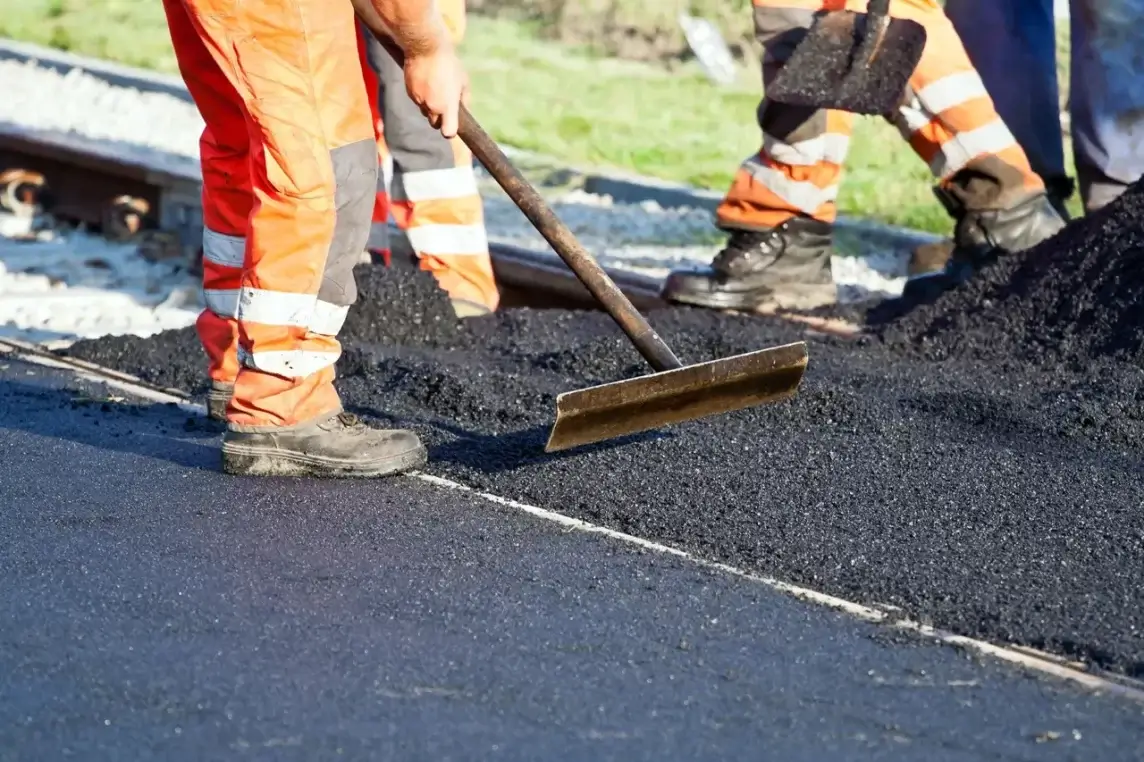Asphalt resurfacing is a critical aspect of pavement maintenance that ensures the longevity, safety, and functionality of roads, driveways, and parking lots. As asphalt surfaces age, they inevitably succumb to the effects of traffic load, weather conditions, and oxidation, leading to cracks, potholes, and general degradation. Resurfacing offers a cost-effective and sustainable solution to rejuvenate these surfaces without needing full reconstruction. Standard Paving in Virginia is a name of trust and a reliable asphalt paving contractor. We are dedicatedly to providing asphalt resurfacing services to our valued clients across the area. Read more about this process to learn its core elements in detail.
What is Asphalt Resurfacing?
Asphalt resurfacing services, or asphalt overlay, involve applying a new layer over an existing pavement surface. This method restores the integrity of the pavement and provides a fresh, smooth finish while addressing superficial damage and extending the surface’s lifespan.
Resurfacing is typically recommended when the pavement’s foundation or base remains structurally sound but the surface layer has become worn out or damaged.
Signs That Asphalt Resurfacing is Needed
Recognizing when to resurface asphalt can save property owners substantial costs in the long run. Some common signs indicating that resurfacing is necessary include:
- Large cracks and alligator cracking: Widespread cracking, especially interconnected or spiderweb-like cracks, is an indicator of surface deterioration.
- Potholes: When they appear more frequently, they may signal the need for resurfacing.
- Pooling water: Poor drainage or pooling on the surface often results from uneven wear and can lead to further degradation.
- Faded surface appearance: UV rays and oxidation fade the black asphalt to a greyish color over time, indicating surface aging.
- Rough texture: When the asphalt surface becomes rough or gravelly, resurfacing can help restore its smoothness.
The Asphalt Resurfacing Process
The asphalt resurfacing services and process involve more than merely applying a new coat of asphalt. It includes multiple critical steps to ensure that the new surface bonds well and lasts as expected:
1. Inspection and Evaluation
A thorough inspection is performed to assess the condition of the existing pavement, including its base. If foundational issues exist, resurfacing may not be sufficient, and full-depth reconstruction might be necessary.
2. Cleaning and Preparation
The surface must be cleaned of debris, vegetation, oil, and other contaminants. This ensures proper adhesion of the new layer. Any loose or crumbling sections of the old pavement may be removed or patched.
3. Milling
In some cases, milling is performed to remove the top layer of asphalt. This helps maintain proper elevation, curbing, and drainage. Milling also creates a rough surface that improves the bond between the old and new layers.
4. Repairing Structural Damage
If any structural deficiencies are found, they are addressed before resurfacing. This may involve patching potholes, sealing large cracks, or reinforcing weak areas.
5. Tack Coat Application
A tack coat (a thin adhesive layer) is applied to help the new asphalt adhere effectively to the existing surface.
6. Laying the New Asphalt
A new layer of hot mix asphalt, typically 1.5 to 2.5 inches thick, is applied using paving equipment. The asphalt is then compacted using rollers to ensure a smooth, even surface.
7. Final Inspection and Striping
After cooling, the surface is inspected for quality. If it’s a roadway or parking lot, pavement markings and striping are reapplied as needed.
Benefits of Asphalt Resurfacing
Choosing resurfacing over full reconstruction or frequent patch repairs offers several benefits:
1. Cost-Effectiveness
Resurfacing is significantly more affordable than completely replacing the pavement. It offers a practical solution when the base is still in good condition.
2. Extended Lifespan
Properly resurfaced asphalt can extend the life of the pavement by 8 to 15 years, depending on usage and maintenance.
3. Improved Aesthetics
A new asphalt layer instantly enhances the appearance of the property. This is particularly beneficial for commercial spaces where curb appeal matters.
4. Enhanced Safety
A smooth, even surface reduces the risk of tripping, skidding, or vehicle damage, contributing to overall safety.
5. Faster Project Completion
Compared to full reconstruction, resurfacing is quicker and less disruptive, making it ideal for high-traffic areas.
Common Applications of Asphalt Resurfacing
Asphalt resurfacing services are widely used in both residential and commercial settings:
- Roadways and highways: Maintains traffic flow and safety without major road closures.
- Parking lots: Improves layout, safety, and accessibility for businesses.
- Driveways: Enhances residential curb appeal and value.
- Airport runways: Maintains safe landing and take-off conditions with minimal downtime.
- Industrial sites: Supports heavy vehicle traffic without costly reconstructions.
When Not to Asphalt Resurface
Asphalt resurfacing services are not always the appropriate solution. If the underlying base is compromised—due to erosion, water damage, or poor original installation—resurfacing can mask the problem temporarily, but failure will eventually occur. In such cases, full-depth reclamation or reconstruction is necessary.
Additionally, surfaces with extensive root damage, drainage issues, or persistent sinkholes may require more intensive interventions.
Choosing the Right Asphalt Contractor
Quality resurfacing work begins with choosing a reliable and experienced contractor. Here are a few key considerations when hiring:
- Experience and licensing: Ensure the contractor has experience with similar projects and carries the necessary licenses and insurance.
- Reputation: Check reviews, references, and completed projects.
- Warranty: A reputable company should stand behind its work with a reasonable warranty.
- Equipment and materials: Modern equipment and high-quality asphalt mixtures provide a durable and smooth surface.
Maintenance After Asphalt Resurfacing
Even after a fresh resurfacing, ongoing maintenance is essential to maximize longevity. Recommended maintenance practices include:
- Sealcoating every 2–3 years to protect from UV rays and moisture.
- Crack sealing promptly to prevent water infiltration.
- Regular sweeping and cleaning to remove debris and contaminants.
- Monitoring for drainage issues that may arise over time.
Conclusion
Asphalt resurfacing is an efficient and effective method of pavement restoration, offering extended durability, improved safety, and aesthetic appeal. While not a one-size-fits-all solution, it remains a preferred choice when the existing base remains intact. Understanding the resurfacing process, knowing when to choose it, and hiring a skilled contractor can help property owners make informed, cost-effective decisions for their paving needs. Standard Paving Virginia is the most reliable name on the list, and we effectively provide professional services to all our clients across the area. Feel free to discuss with our team and get asphalt resurfacing quotes. e assure you that we will use quality material for the driveway area maintenance and construction.

